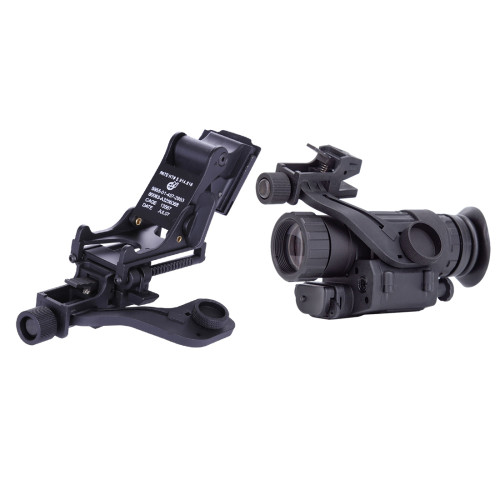Cart
Night Vision Goggles (12)
HOW DOES NIGHT VISION WORK?
Night vision devices (NVD) amplify available light so you can see in dark or lowlight conditions. With quality night vision goggles and scopes you can see people, animals, and objects up to 1,000 yards away on a dark night.
An NVD works by directing light toward an objective lens, which focuses it on an image intensifier. Next, a photocathode converts light into energy and directs it onto a screen to create an image.
CLASSIFICATION OF NVD
There are a variety of NVDs including night vision scopes, night vision monoculars, night vision binoculars, and night vision goggles.
There are also two types of night vision images: the traditional monochrome green, and digital color.
ARE THEY DIFFICULT TO USE?
No. Most NVDs are easier to operate than a video camera. One difference is that you must first focus your eyepiece on the internal screen and then focus the lens on the subject. This simple adjustment takes about five seconds.
APPLICATIONS OF NIGHT VISION
Night vision technology is used in several types of devices, all designed to enhance viewing in dark or low-light environments.
Night vision scopes can be monocular (a single eyepiece) or binocular (two eyepieces for a stereoscopic image).The goggles can be incorporated into a headband or helmet.Because goggles are worn instead of held, they free up your hands for other purposes. They're great for when you're moving around at night or in dark buildings.
Finally, many still and video cameras incorporate digital night vision technology for shooting at night. Night vision cameras are often used for surveillance purposes, especially around a building's unlit perimeter.
Elements to compare
Fortunately, or not, there is no one concrete parameter to look at when comparing different NVDs. You should be looking at least following:
- Brand
- TacticalXmen
- Contact Us
-
Support: Service@tacticalxmen.com
(9 am-11 pm GMT+8)Affiliate: Affiliate@tacticalxmen.com
(9 am-11 pm GMT+8)Wholesale: Sales@tacticalxmen.com
(9 am-11 pm GMT+8)
- CUSTOMER SERVICE
- Privacy Policy
- Terms of Service
- Return and Refund
- Shipping Methods
- Military Discount
- User Center
- Forget Password
- My Orders
- Tracking Order
- My Account
- Register
- Popular Searches
-
Tactical Apparel Tactical Belts




































































































































































































